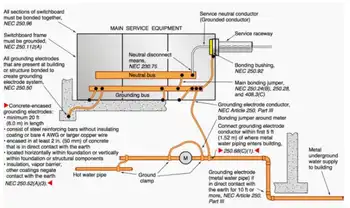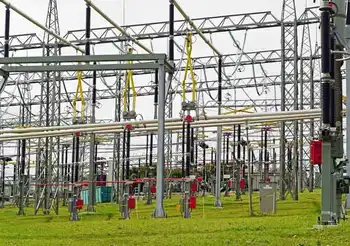Quebec should be wary of ZENN initiative
By Montreal Gazette
CSA Z462 Arc Flash Training - Electrical Safety Essentials
Our customized live online or in‑person group training can be delivered to your staff at your location.

- Live Online
- 6 hours Instructor-led
- Group Training Available
What are we to make of this? Is this a good sector to target with subsidies and special policies?
The facts are a good place to start: The much touted ZENN (zero emissions no noise) completely electric "plug-in" vehicle, produced in Quebec, is a small car weighing about 590 kilograms with a range of up to 100 kilometres; it sells for about $15,000, has a top speed of 40-something km/h, and costs not much more than a penny per kilometre for "fuel." This is a strictly "neighbourhood" vehicle.
Vehicles of the ZENN variety are not a substitute for the traditional family car in the way that the Toyota Prius is - a vehicle with an internal combustion engine supplemented by electric propulsion. The front-runner in the race to produce a vehicle that is primarily electric and at the same time a genuine substitute for the traditional car is the General Motors concept car VOLT.
Though still at the design stage, GM is betting that the car can enter production in three years. While battery technology is the key bottleneck, GM envisages this car will have a range of 60 kilometres on a battery charge, and additionally have a gasoline-based generator to provide electricity to the motors to drive farther than 60 km.
At current electricity prices, this car may cost two cents per kilometre in "fuel." But the purchase price probably will be in the $30,000-plus range - possibly more in Canada. And GM will need to sell an enormous number to recoup development costs.
A series of other international manufacturers have joined the race. But, in view of our plentiful and cheap hydro, does Quebec have a natural advantage in this market - one that would justify special treatment? The answer is probably not. Here's why:
First, even though Hydro-Québec sells electricity at a very low rate to its customers - a rate that covers average costs, Quebec does not have any significant cost advantage for marginal or new-source electricity generation. While James Bay can supply electricity for a few cents a kilowatt-hour, projected new supply will cost much the same as electricity produced elsewhere in the world. If anything, Quebec should increase its current price to equal new-source costs. This would discourage waste and facilitate further exports that, in turn, could displace dirty (coal-based) supply.
Second, it is crucial to recognize the cost balance between capital and running costs is very different for proposed plug-in electric vehicles than for traditional vehicles. At current gasoline prices, a conventional vehicle, running 20,000 km per annum, requires a fuel outlay of about $3,000. But an electric-powered vehicle running only on electricity might require just $400 for the same distance travelled.
While hydro rates are particularly low in Quebec, it is straightforward to see that even if our rates were 50-per-cent higher than they are today, such an increase would have little impact on the annual fuel costs for a plug-in car, and for that matter on the choice of what type of vehicle to purchase in the first place. Capital costs will dominate in that choice, and Canada has tax credits for alternative vehicles, much like the rest of the world.
So what about directing public money at this sector? Would a public-private fund send Quebec to the head of the pack? This possibility raises further questions in turn: where would the money go - to producers, researchers, universities, battery development or to individual manufacturers? And would the research results be proprietary or public - who would own them at the end of the day: a conglomerate, research institutions or individual manufacturers? And do we know where to put the money in the first place - given the many different avenues currently being explored by engineering corporations worldwide? Public money invested in research can yield high returns when appropriately directed - for example, in health and medical projects. But in this instance, the uncertainties are very great.
Finally, it is important to remember a shortage of skilled workers in Quebec and much of the rest of Canada is a bigger economic problem than the lack of high-skill jobs.
Perhaps we would get a better return by investing millions in projects aimed at reducing school drop-out rates and developing skills to fill available jobs, than by spending billions on a project with a highly uncertain outcome.











